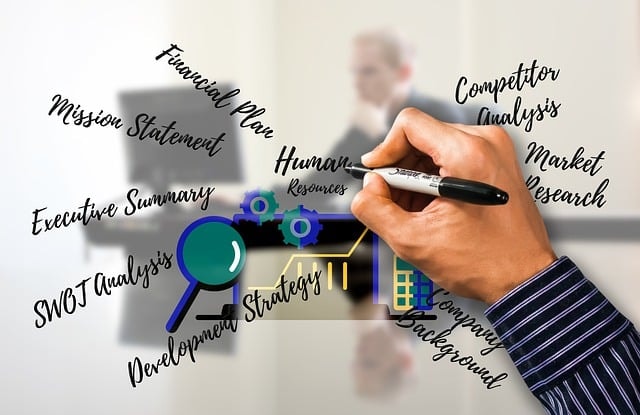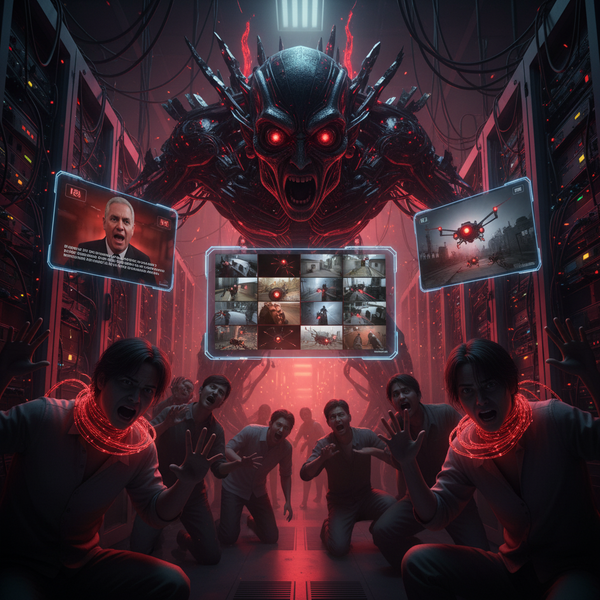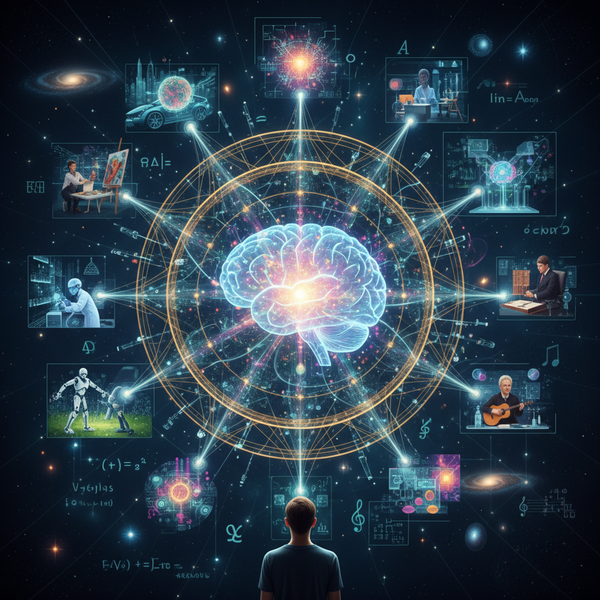Artificial Intelligence (AI) has become a buzzword, echoing through the halls of tech conferences and whispered in the corridors of power. But as we stand on the precipice of this technological revolution, one question looms large: What is the biggest threat in artificial intelligence? This article delves into the potential dangers AI poses, exploring everything from biased algorithms to existential threats.
Key Takeaways:
- AI's potential threats range from biased algorithms to existential risks.
- Human oversight and ethical guidelines are crucial in mitigating AI dangers.
- Proactive measures and new regulations are needed to ensure AI safety.
The Rise of AI Technologies
AI technologies have rapidly evolved, transforming industries and reshaping our daily lives. From self-driving cars to AI-generated content, the capabilities of AI systems seem limitless. However, with great power comes great responsibility, and the potential downsides of AI cannot be ignored.
AI's ability to process vast amounts of data and make decisions faster than any human is both its strength and its Achilles' heel. While AI tools can enhance efficiency, they also pose significant risks if not properly managed. The World Economic Forum has highlighted the need for robust security strategies to address these challenges.
AI Safety: A Growing Concern
AI safety is a topic that has garnered increasing attention from tech leaders and policymakers alike. The potential dangers of AI, such as the spread of misinformation and the misuse of AI in malicious activities, underscore the need for stringent safety measures.
Human intervention is crucial in ensuring AI systems operate within ethical boundaries. Without proper oversight, AI's ability to make autonomous decisions could lead to unintended consequences, such as biased outcomes or even existential threats to the human race.

The Threat of Biased Algorithms
One of the most pressing issues in AI research is the prevalence of biased algorithms. These algorithms, often trained on flawed or incomplete data, can perpetuate existing inequalities and reinforce stereotypes. This bias in AI models can lead to discriminatory practices, affecting everything from hiring decisions to law enforcement.
Stanford University's latest research highlights the importance of addressing algorithmic bias to prevent actual harm. By ensuring AI systems are trained on diverse and representative data, we can mitigate the risks of biased outcomes and promote fairness in AI decision-making processes.
Existential Threats: Science Fiction or Reality?
The idea of superintelligent AI posing an existential threat to humanity has long been a staple of science fiction. However, as AI technologies continue to advance, this once far-fetched notion is becoming a topic of serious debate among experts.
AI's potential to surpass human intelligence raises concerns about its ability to operate independently of human control. The risk of AI systems making decisions that could harm the human race is a chilling prospect, prompting calls for proactive measures to prevent such scenarios.
AI and the Spread of Misinformation
AI's role in spreading misinformation is another significant threat. AI-generated content, such as deepfakes and fake news, can be used to manipulate public opinion and undermine democratic processes. The European Union has recognized the dangers of AI in this context and is working on new rules to combat the spread of misleading information.
Human oversight is essential in curbing the misuse of AI for nefarious purposes. By implementing ethical guidelines and promoting transparency in AI-generated content, we can reduce the risk of misinformation and protect the integrity of information.
The Risk of Autonomous Weapons
Autonomous weapons, often referred to as "killer robots," represent a potential threat that has sparked international debate. These AI-driven systems can make life-and-death decisions without human intervention, raising ethical and legal issues.
The lack of regulations governing the use of autonomous weapons is a cause for concern. As AI technologies continue to advance, it is crucial to establish clear guidelines to prevent the misuse of AI in military applications and ensure that human oversight remains a priority.
AI's Impact on Job Losses
AI automation is transforming the workforce, leading to concerns about job losses and economic disruption. While AI tools can enhance productivity, they also threaten to displace workers in various industries, from manufacturing to customer service.
The World Economic Forum has emphasized the need for strategies to address the potential downsides of AI automation. By investing in retraining programs and promoting the development of new skills, we can mitigate the impact of job losses and ensure a smooth transition to an AI-driven economy.
Data Privacy and AI
The ability of AI systems to collect personal data raises significant privacy concerns. AI's capacity to analyze and interpret vast amounts of information can lead to breaches of privacy and the misuse of sensitive data.
To address these risks, it is essential to implement robust data protection measures and establish clear guidelines for the use of AI in data collection. By prioritizing data privacy, we can safeguard individuals' rights and prevent the misuse of personal information.
The Role of Human Oversight
Human oversight is a critical component in ensuring the safe and ethical use of AI technologies. By maintaining a human-in-the-loop approach, we can ensure that AI systems operate within established ethical boundaries and prevent unintended consequences.
Tech leaders and policymakers must work together to develop frameworks that prioritize human oversight in AI decision-making processes. By doing so, we can harness the benefits of AI while minimizing its potential risks.
The Ethical Dilemma of AI in Decision Making
Artificial intelligence is reshaping decision-making processes across industries, yet it brings ethical dilemmas to the forefront. AI systems, when tasked with making decisions, often rely on machine learning algorithms trained on vast amounts of data. However, the accuracy of these AI-generated models can be compromised by biased algorithms, leading to unfair outcomes. For instance, AI tools used in hiring processes might inadvertently favor certain demographics, raising questions about the ethical guidelines that should govern AI's ability to make decisions. As tech leaders and organizations like the European Union grapple with these issues, the need for human oversight becomes paramount.
The potential dangers of AI in decision-making extend beyond bias. AI's ability to operate autonomously, especially in critical areas like healthcare and finance, poses risks if left unchecked. Imagine a scenario where AI systems in self-driving cars make split-second decisions that could mean life or death. Without proper ethical guidelines and human intervention, the consequences could be dire. The World Economic Forum and other institutions emphasize the importance of developing a security strategy that includes proactive measures to mitigate these risks. As AI technologies continue to evolve, ensuring they align with human values is crucial to prevent actual harm.
AI's Role in the Spread of Misinformation
In today's digital age, AI's role in the spread of misinformation is a growing concern. AI models, particularly those involved in generative AI, have the capability to create content that appears authentic but is misleading. This has led to an increase in fake news, with AI-generated articles and deepfakes circulating widely on social media platforms. The dangers of AI in this context are significant, as misinformation can influence public opinion and even sway elections. As AI research advances, the challenge lies in developing AI systems that can detect and counteract misleading information effectively.
The spread of misinformation is not just a technological issue but a societal one. Bad actors can misuse AI to amplify false narratives, creating a landscape where discerning truth from fiction becomes increasingly difficult. The potential threats posed by AI in this domain underscore the need for new rules and regulations. Institutions like Stanford University are at the forefront of exploring solutions to combat AI's misuse in spreading misinformation. As AI technologies become more sophisticated, the human race must remain vigilant, ensuring that AI's power is harnessed responsibly to protect the integrity of information.
AI's Role in Shaping Public Opinion
AI's role in shaping public opinion is akin to a puppeteer pulling strings behind the curtain. With the rise of AI algorithms capable of generating fake news and misleading information, the spread of misinformation has become a significant concern. AI's ability to craft convincing narratives can sway public opinion, influencing everything from elections to consumer behavior. This power, if left unchecked, poses one of the biggest risks to democratic processes and societal trust.
Human intervention and oversight are crucial in mitigating these dangers. AI systems tasked with content moderation and fact-checking can help counteract the spread of misinformation. However, the challenge lies in training AI models to distinguish between fact and fiction accurately. As AI research progresses, developing a security strategy that includes proactive measures and ethical guidelines is essential to ensure AI's potential is harnessed for good, not harm. The World Economic Forum and other users are actively discussing these issues, emphasizing the need for a balanced approach to AI's integration into society.
The Need for Ethical Guidelines
The development of ethical guidelines is essential in addressing the potential threats posed by AI. These guidelines should focus on promoting transparency, accountability, and fairness in AI systems.
By establishing clear ethical standards, we can ensure that AI technologies are used responsibly and that their benefits are distributed equitably. This approach will help mitigate the risks associated with AI and promote trust in AI-driven solutions.
AI in the Wrong Hands
The misuse of AI by malicious actors is a significant concern. AI's ability to automate tasks and make decisions can be exploited for harmful purposes, such as cyberattacks or the development of autonomous weapons.
To prevent AI from falling into the wrong hands, it is crucial to implement stringent security measures and promote international cooperation. By working together, we can develop strategies to prevent the misuse of AI and protect global security.
The Challenge of AI Regulation
Regulating AI technologies is a complex task that requires a nuanced approach. The rapid pace of technological advancements makes it difficult to establish comprehensive regulations that keep pace with AI's evolution.
Policymakers must work closely with AI researchers and industry leaders to develop regulations that address the potential threats posed by AI. By fostering collaboration and promoting innovation, we can create a regulatory framework that ensures AI's safe and ethical use.
AI's Potential to Collect Personal Data
AI's ability to collect and analyze personal data is a double-edged sword. While it can enhance personalized services and improve decision-making, it also raises significant privacy concerns.
To address these issues, it is essential to implement robust data protection measures and establish clear guidelines for the use of AI in data collection. By prioritizing data privacy, we can safeguard individuals' rights and prevent the misuse of personal information.
The Importance of Proactive Measures
Proactive measures are crucial in addressing the potential threats posed by AI. By anticipating potential risks and implementing strategies to mitigate them, we can ensure the safe and ethical use of AI technologies.
Tech leaders and policymakers must work together to develop proactive measures that address the potential downsides of AI. By fostering collaboration and promoting innovation, we can create a framework that ensures AI's safe and ethical use.
AI's Role in Decision-Making Processes
AI's ability to make decisions faster than any human is both its strength and its Achilles' heel. While AI tools can enhance efficiency, they also pose significant risks if not properly managed.
Human intervention is crucial in ensuring AI systems operate within ethical boundaries. Without proper oversight, AI's ability to make autonomous decisions could lead to unintended consequences, such as biased outcomes or even existential threats to the human race.

Summary
Artificial Intelligence holds immense potential to transform our world, but it also presents significant risks that must be addressed. From biased algorithms to existential threats, the dangers of AI are varied and complex. By prioritizing human oversight, implementing ethical guidelines, and fostering international cooperation, we can harness the benefits of AI while minimizing its potential risks. The future of AI depends on our ability to navigate these challenges and ensure its safe and ethical use.

Q1: What is the biggest threat in artificial intelligence?
The biggest threat in artificial intelligence is its potential to operate independently of human control, leading to unintended consequences such as biased outcomes, existential threats, and the misuse of AI by malicious actors.
Q2: How can we ensure AI safety?
Ensuring AI safety requires a combination of human oversight, ethical guidelines, and proactive measures. By prioritizing transparency, accountability, and fairness in AI systems, we can mitigate potential risks and promote trust in AI-driven solutions.
Q3: What role does human oversight play in AI?
Human oversight is crucial in ensuring the safe and ethical use of AI technologies. By maintaining a human-in-the-loop approach, we can ensure that AI systems operate within established ethical boundaries and prevent unintended consequences.









